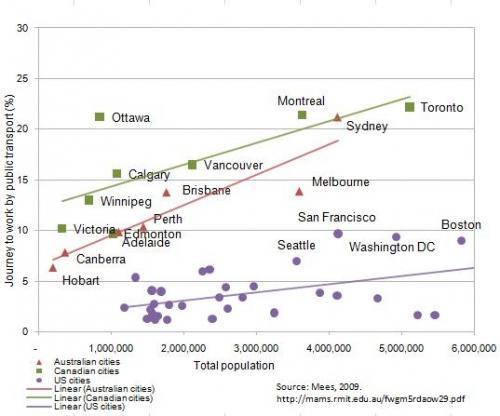Not at all. However, it would show whether the BRT plan was a good idea or whether there was a real demand for higher level RT. For example, if that section of the line, ridership doubled the former VIVA route, then we can see not only the success of the upgrade to a subway, but that there is a good chance there was new riders.
Well depends on what its replaced by, a subway or an LRT?
If the former, then the ridership would increase tremendously. If the latter, it might increase by a bit? but still a very small amount.
That is a good question. Actually, that is a very good question. VIVA has been around since 2005, so in 15 years, it covers most of the region. There is currently a Silver Line that will be added in the next year. There is no talk of upgrading except for existing subway extensions. The Transitways in Ottawa were upgraded after about 30 years. However, the pain of the Ottawa upgrade has been less than desirable. If London released a full build out that extended from the 401 to Fanshawe Park Rd, from Airport Rd to beyond Hyde Park Rd within 10-15 years, I would go for the BRT. However, unless someone can find a source, I have not seen that. K/W did not have a BRT along their route prior to the iON. They did/do have express routes, but not a BRT.
This is actually a really good point on your end, but here is something to consider: The issue Ottawa faced is that it was converting a fully grade separated transitway into an LRT. The replacement bus service had to be done along vaguely tangential routes that substantially increased travel time. By contrast, services like VIVA operate mainly on street, and if it ever needs to upgrade to LRT, you can just put busses curbside and while there will be a downgrade in service it won't be too drastic.
As for K/W, most of the route operates on old rail corridors where rail would be cheaper to make, especially with early 2010s money. Had it not been that fact, I honestly think K/W should've went for BRT.
Streetcars to bus.... Ok... Show me a bus route in Toronto that is busier than the busiest streetcar route.
The Finch East, Eglinton East, Finch West, York Mills, Jane, Lawrence, Don Mills, Dufferin, and Sheppard East busses all have more ridership than the 506, 512, or 505 - despite 2 of the latter 3 operating mostly in a downtown core where there is more density.
What is the improvement that will work to draw more people to VIVA? Short answer, not much.
Higher frequencies on most routes - BIG TIME.
If there isn't a demand for 5 minute frequency due to ridership, that would be a waste.
5 minute frequent busses have a similar capacity to 15 minute LRT service. If there isn't demand for busses, there isn't a demand for LRT. Period.
Define good transit. Do you really think London Transit or London city council can create a better bus system? What has stopped them up till now? It would be better if it is done right the first time. K/Wdid that. Ottawa and York Region didn't.
They could easily run more frequent busses to generate more ridership but they don't do that because they're stuck with the old "car-centric nobody wants to ride a bus" mentality. That doesn't make them right, that makes them ignorant.
I haven't said nowhere else has done BRTs. I will say that it does not seem that most systems remember the (R)apid part. Ottawa forgot that downtown.
LRT isn't more rapid than BRT. Period. LRT is just BRT but with more capacity.

maps.app.goo.gl

maps.app.goo.gl






